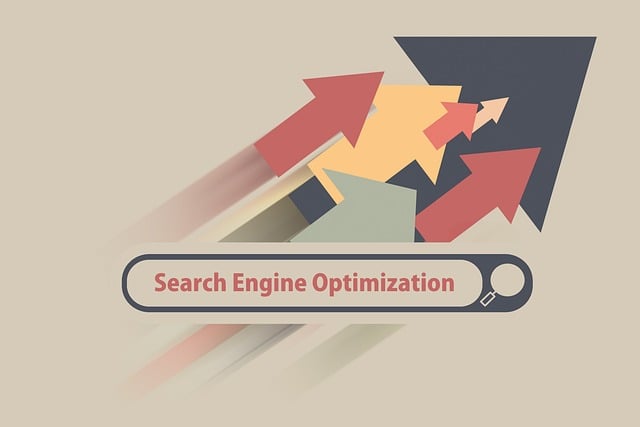Meta Tags for On-Page SEO:
Meta tags are crucial HTML elements guiding search engine algorithms about webpage content, relevance, and audience. For effective On-Page SEO, optimizing these tags is key. Title tags, as page headlines visible in tabs and search results, should include relevant keywords while maintaining readability. Meta descriptions, brief summaries under search titles, don't directly rank pages but can boost click-through rates.
Effective meta tag optimization involves:
– Keyword Research: Using tools like Google Keyword Planner or SEMrush to identify relevant terms (both broad and long-tail).
– Balancing Visibility & User Experience: Crafting compelling title tags that grab attention and ensure each page has a unique, accurate title. Writing persuasive meta descriptions (150-160 characters) highlighting content benefits.
– Avoiding Pitfalls: Steering clear of irrelevant keywords and ensuring uniqueness, relevance, and readability in meta descriptions.
Success is measured through:
– Click-Through Rates (CTR): Tools like Google Search Console track impression share, average position, and CTR, helping to identify high-performing meta tags.
– Website Traffic & Rankings: Regularly reviewing key metrics to adjust meta tags for enhanced search engine rankings and user engagement.
In today’s competitive digital landscape, meta tag optimization is an essential component of on-page SEO strategies. This article delves into the intricacies of meta tags and their pivotal role in boosting online visibility. We explore different types of meta tags tailored for major search engines, offering best practices from title tags to meta descriptions. By integrating keyword research techniques and balancing SEO with user experience, you can create compelling content that attracts clicks and drives engagement. Discover tools, avoid common pitfalls, and learn how to measure the success of your meta tag optimization efforts.
Understanding Meta Tags and Their Role in On-Page SEO

Meta tags are essential components of a website’s HTML code, serving as a bridge between your content and search engine algorithms. They provide concise yet powerful information about a web page, including its topic, relevance, and desired audience. For SEO (Search Engine Optimization), understanding and optimizing meta tags is crucial for on-page optimization.
On-Page SEO involves enhancing each element of a webpage to improve its visibility and ranking on search engine results pages (SERPs). Meta tags play a pivotal role in this strategy as they offer a direct way to communicate with search engines about the content and purpose of your page. By crafting well-structured meta titles, descriptions, and keywords, you can significantly impact how search engines crawl and index your site, potentially driving more organic traffic and boosting online visibility.
Types of Meta Tags: Essential for Different Search Engines

In the realm of On-Page SEO, meta tags play a pivotal role in optimizing web content for various search engines. These tags serve as a bridge between the website and search engine algorithms, providing crucial information about the page’s context and relevance. Among the different types of meta tags, Title Tags and Meta Descriptions are essential for most search engines.
Title Tags act as the page’s headline, appearing at the top of browser tabs and in search results. They must be crafted to include relevant keywords while maintaining readability. Meta Descriptions, on the other hand, are brief summaries that appear below a search result’s title. While not directly factored into search engine rankings by all engines, compelling meta descriptions can boost click-through rates, indirectly impacting visibility. Effective use of these tags enhances user experience and signals to search algorithms what the page is about.
Optimizing Title Tags: Crafting Compelling Titles for Click-Worthy Results

Title tags are a crucial aspect of on-page SEO, acting as the first point of contact between your website and potential visitors. Crafting compelling and click-worthy titles involves balancing keyword relevance with user appeal. By integrating targeted keywords naturally within engaging and descriptive language, you increase the likelihood of capturing your audience’s interest and improving search engine rankings.
Effective optimization ensures that each page has a unique title that accurately represents its content while standing out in search results. This strategy not only draws clicks but also fosters a better user experience, as visitors are more inclined to interact with titles that align with their information needs. Ultimately, optimizing title tags is a powerful tool for driving organic traffic and enhancing your website’s online visibility.
Meta Description Best Practices: Persuading Users to Click

A well-crafted meta description is a powerful tool in your on-page SEO arsenal, serving as a concise summary that appears below your webpage’s title in search engine results pages (SERPs). The key to writing compelling meta descriptions lies in understanding user intent and crafting content that addresses their queries directly. Aim for 150-160 characters or less to ensure it displays fully on most devices and search engines, while also incorporating relevant keywords naturally.
Use this real estate to persuade users to click through to your site. Highlight the primary benefit or unique selling point of your webpage. For example, if you run a blog about travel, a meta description could mention “Discover hidden gems in Europe: immersive experiences for every budget” rather than simply listing keywords. This invites potential readers to learn more, fostering engagement and driving traffic to your content.
Keyword Research for Meta Tags: Finding the Right Terms

Effective meta tag optimization starts with thorough keyword research, a critical aspect of on-page SEO. The goal is to identify relevant terms that accurately represent your page content while being search engine-friendly. Tools like Google Keyword Planner or SEMrush can help uncover popular searches related to your niche, allowing you to select keywords with good search volume and low competition.
This process involves examining both broad and long-tail keywords. Broad terms are more general and competitive but can drive high traffic. Long-tail keywords, though less searched, are specific and often indicate a user’s intent better, making them more effective in attracting targeted visitors. Incorporating these keywords strategically into your meta tags ensures that search engines understand the context of your content, boosting your page’s visibility and relevance.
Balancing SEO and User Experience with Meta Tags

Optimizing meta tags is a delicate balance between enhancing search engine visibility and delivering an exceptional user experience. Meta tags play a pivotal role in On-Page SEO, acting as a bridge between your website’s content and the vast landscape of the internet. However, their effectiveness extends beyond mere search rankings; they significantly influence how users perceive and interact with your site.
When crafting meta tags, it’s essential to consider both the algorithms of search engines and the preferences of your target audience. Descriptive and keyword-rich title tags capture attention in search results, enticing users to click. Simultaneously, well-structured meta descriptions provide a concise overview of your page’s content, encouraging engagement while adhering to user expectations of clarity and relevance. This balance ensures that your website not only ranks higher but also attracts and retains visitors who find what they’re looking for without compromise.
Tools for Effective Meta Tag Optimization

Meta tag optimization is a crucial aspect of on-page SEO, allowing search engines to understand and accurately represent your web content. There are numerous tools available to streamline this process and enhance your website’s visibility. One popular choice is keyword research tools like Google Keyword Planner or SEMrush, which aid in identifying relevant keywords with high search volume. These tools provide insights into related topics and long-tail keywords, enabling you to craft meta tags that resonate with your target audience.
Additionally, SEO content creators and writers can leverage browser extensions such as Yoast SEO or All in One SEO Pack for WordPress. These plugins offer real-time guidance on optimizing title tags, meta descriptions, and headers. They check the effectiveness of your meta tags based on keyword density, readability, and overall search engine friendliness. With these tools, you can efficiently create compelling meta tags that drive organic traffic and improve your website’s ranking in search results.
Common Mistakes to Avoid During Meta Tag Implementation

When implementing meta tags for On-Page SEO, several common pitfalls can be easily avoided. One significant mistake is overlooking the importance of keyword research. Using irrelevant or overly broad keywords may confuse search engines and negatively impact your rankings. Each meta tag should be tailored to its specific page content, focusing on relevant keywords that accurately represent the page’s topic.
Another error is crafting generic meta descriptions. While it’s tempting to use a single description for multiple pages, this approach can undermine your SEO efforts. Every meta description should provide a unique and compelling summary of the page’s content, enticing users to click through while ensuring it aligns with the targeted keywords.
Measuring Success: Analyzing Meta Tag Performance

Measuring success in meta tag optimization is a crucial aspect of on-page SEO. It involves analyzing how well your meta tags are performing in attracting and engaging users, as well as their impact on click-through rates (CTR) and overall website traffic. By utilizing tools like Google Search Console and analytics platforms, you can track key metrics such as impression share, average position, and CTR for your targeted keywords.
Regularly reviewing these performance indicators allows you to identify which meta tags are driving the most relevant traffic and make data-driven adjustments to improve rankings. For instance, if a particular meta description consistently generates high CTRs, it’s a strong indicator that the content is resonating with users, signaling to search engines that your page is a valuable resource for their queries.
